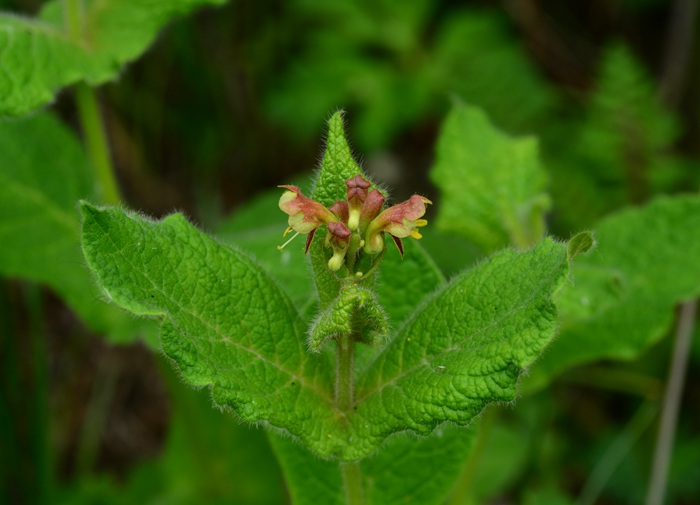- Scientific Name: Triosteum himalayanum Wall.
- Ref: W.Roxburgh, Fl. Ind. 2:180. 1824
- Synonyms: Triosteum erythrocarpum Harry Sm.; Triosteum fargesii Franch.
- English Common Name: Himalayan horse-gentian
- Chinese Common Name: 穿心莛子藨 chuānxīn tíngzi∙pāo
- Japanese Common Name: ヒマラヤツキヌキソウ [ヒマラヤ突抜草] himarayatsukinukisō
- Family: Caprifoliaceae
- Genus: Triosteum
- Distribution: Mountain slopes, coniferous forests, streamsides, grasslands; 1800-4100 m. ?Henan, Hubei, Hunan, Shaanxi, Sichuan, Xizang, Yunnan [Bhutan, India, Nepal].
- Photo: Yunnan
Herbs, perennial, 40-60 cm tall, branched below terminal inflorescence after anthesis, densely hirsute, glandular hairy, faintly aromatic. Leaves obovate-elliptic to obovate-oblong, ca. 11 × 7 cm, abaxially long hirsute on veins, interspersed with glandular hairs, adaxially densely long hirsute, lower part narrowed to a broadly perfoliate base, margin entire or occasionally lobed, apex acute to acuminate. Inflorescence of 2-5 whorls, at apex of stem. Sepals to 1 mm. Corolla lobes purple-brown with paler flecks; tube yellow-green, ca. 1.5 cm, outside glandular hairy; tube curved at base and shallowly spurred, spur pointing downward to below apex of ovary. Drupe ripening from white to red, subglobose, 10-12 mm in diam., hirsute and glandular hairy, crowned with a persistent calyx. Pyrenes 3-5, without ribs. Fl. May-Jul, fr. Jul-Sep. (Flora of China)
